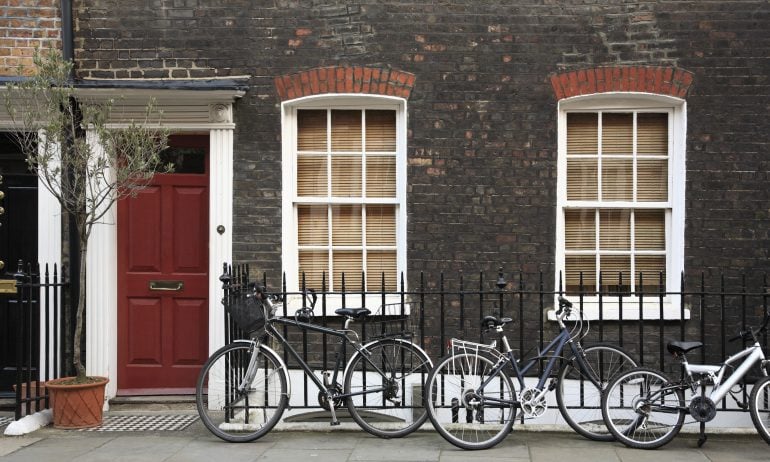How to Choose the Best Mortgage

Many or all of the products featured here are from our partners who compensate us. This influences which products we write about and where and how the product appears on a page. However, this does not influence our evaluations. Our opinions are our own. Here is a list of our partners and here's how we make money.
If only shopping for a mortgage was as much fun as shopping for shoes — or a smartphone or a big-screen TV. Hunting down those bargains and saving a few bucks is worth an afternoon or two, right? But the time and effort it takes to decode jargon and apply to lenders when shopping for a mortgage may not give off the same zing.
Still, you can make this as pain-free as possible. Here are six steps to choosing the right mortgage loan.
1. Figure out how much you can afford
Since this is a six-figure purchase, you're probably already wondering if it's really within your financial reach. A calculator can help you determine how much house you can afford.
If you have a decent credit score, lenders will likely be more optimistic about how much house you can buy than you are. Keep in mind, their job is selling a loan — your job is to pay it back. So leave some room in your budget for living life.
2. Set a savings goal for the upfront costs
Lenders not only want you to qualify for a large loan, they want you to have some money in the bank for the down payment and a long list of closing costs, too.
The down payment always seems like a big ask, but it's to your advantage to cushion your purchase with a little instant home equity by putting down as much as you comfortably can. With a too-small down payment — and with just a little downturn in the real estate market — you could have a big loan and a home that's worth less than you owe. Not a good place to be if you're forced to make a move.
3. Consider the length of the mortgage loan
The first time you heard the phrase "30-year mortgage," you probably choked a little bit, right? That's a long-term commitment. But there are also 10- and 15-year loans — some lenders even offer varying loan lengths with "write your own mortgage" programs in any length inside of 10 to 30 years, says John Pataky, an executive vice president at TIAA Bank.
If your budget allows for the bigger payment of a shorter-length loan, Pataky says you're likely to see two benefits: a significant reduction in total interest expense over the life of the mortgage and a better mortgage rate.
4. Choose the right type of mortgage
This is where most articles dive into a bunch of mind-numbing mortgage terms. Just know that there are special types of loans for borrowers:
With a military connection. (See VA loans.)
Who would like to live in a rural or suburban area. (See USDA loans.)
Who have a lower credit score. (See FHA loans.)
Who are buying a house that's a little — or a lot — more expensive than standard loan guidelines allow. (See jumbo loans.)
If you don't exactly fit any of the descriptions above, you're probably a good candidate for the conventional loans most lenders like best.
5. Know how mortgage interest rates work
The price you'll pay to borrow the money for your home, the interest rate, is another key to choosing the best mortgage loan. Mortgage rates move a lot — in fact all day, every day that the bond market is open. Without going all Wall Street on you, here's what you'll want to know: You can lock in your loan's interest rate over the long term, or let it move with the market and adjust once a year.
A guaranteed-for-the-life-of-the-loan fixed-rate mortgage may start out a little higher than the go-with-the-market adjustable-rate mortgage, or ARM. But the lower ARM rate that resets once a year after an initial term of three, five, seven or 10 years, can go anywhere — up, down or sideways.
“You can lock in your loan's interest rate over the long term, or let it move with the market and adjust once a year. ”
Pataky says to ask yourself, "what are your intentions for this house?" Are you on a five-year plan and then expect to move up to a better house — or across the country?
"So you start with, 'what's the [estimated time] I plan to stay in this property, or retain a mortgage on this property,'" Pataky says.
If you are certain you'll move, refinance or pay off the mortgage before the guaranteed rate on an ARM expires, the adjustable-rate mortgage may be a good option. However, if you live in the house for seven years and decide you want to stay in the home, interest rates available for a refinance into a fixed rate loan may be considerably higher by then.
Getting ready to buy a home? We’ll find you a highly rated lender in just a few minutes.
Enter your ZIP code to get started on a personalized lender match
6. Shop mortgage lenders like you shop for shoes
We saved the most important way to get the best mortgage for last: Shop three or more lenders. Shop like you do for shoes, or whatever the thing is that you are most inclined to enthusiastically bargain hunt for.
Because what you save on a home by shopping for the lender with the best mortgage rate and the lowest origination fee could buy you a lot of shoes, smartphones and big-screen TVs.


